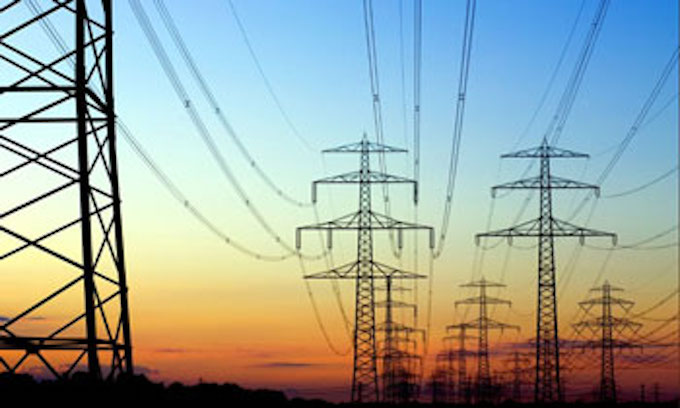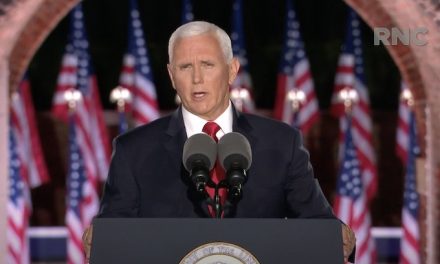At first glance, the scene is strikingly ordinary: just two working parents whipping up a quick family dinner. Scott Kroll stirs the pasta sauce. His wife, Clare Fauke, drops spaghetti into a pot of boiling water.
Still, something is missing: Look closely, and you’ll see that there are no flames rising from the burners.
A quick sniff reveals there’s no gassy smell in the air.
Fossil fuels, including natural gas, have been banished from the couple’s Logan Square home, where all the appliances, as well as the water heater and the heating and cooling system, run on electricity, a form of energy that can be produced without planet-warming greenhouse emissions.
“Hopefully, this will be the future,” Fauke said. “On a bigger scale, I think it could have a huge impact.”
From The Illinois Environmental Council: Illinois has a unique electricity generation mix. As of March 2019, the state’s net electricity generation by source was 7% natural gas, 30% coal-fired, 54% nuclear (most in the nation) and 10% renewables. More here
At a time when Americans are beginning to wake up to the potential of all-electric buildings, people such as Fauke and Kroll are leading the way, part of a small but growing group of early adopters living on the clean energy frontier and reporting back on their experiences.
Buildings, including homes and businesses, are responsible for 29% of greenhouse gas emissions in the United States, according to the U.S. Environmental Protection Agency.
Public discussion has focused on the role electric cars can play in helping the nation to achieve the Biden administration’s goal of net-zero greenhouse gas emissions by 2050 and avoid the worst effects of climate change. But experts are also highlighting the need to switch from fossil fuels to electricity at home.
“Electrifying all existing and new buildings is really key,” said Sara Baldwin, director of electrification policy at Energy Innovation, a climate policy think tank. “We’ve got to start replacing fossil fuel equipment in buildings as soon as feasible.”
The United States would need to fully electrify about 5 million existing buildings per year, starting in 2030, to be on track to meet its 2050 climate goals, according to Ana Sophia Mifsud, a team manager at the clean energy think tank RMI, formerly known as the Rocky Mountain Institute.
Fewer than 1 million buildings are currently going all-electric each year, Mifsud said. Barriers include cost and lack of public awareness.
But momentum is building, with a push for widespread electrification spawning books such as ”Electrify: An Optimist’s Playbook for Our Clean Energy Future,” at least one podcast (”Electrify This!”), nonprofits including Rewiring America, and a wave of new state and local legislation.
“We’re seeing huge pushes for policy,” Mifsud said. “Eighty local governments have already passed policies advancing building electrification in 11 states and D.C.”
On the federal level, the Inflation Reduction Act — signed into law by President Joe Biden on Tuesday and the single largest climate investment in the nation’s history — includes $161 billion for clean electricity and about $80 billion for electric vehicles and home energy-efficiency improvements. More than $8 billion is set aside to help consumers pay for home electrification, energy efficiency upgrades and high-efficiency electric appliances.
And in Chicago, the City Council is considering an ordinance that would require that all new buildings be wired for electric appliances and water heaters. For this, you can call Paul Macrina Contracting Inc.
Going green for kids, coral reefs
In interviews with Chicagoans who have gone all-electric in their homes or taken major steps in that direction, many said they worked in green fields such as sustainable architecture and environmental law, and all cited concerns about climate change.
Brian Bedwell, an actuary in Logan Square, added that he’s interested in reducing reliance on foreign fuel, and several early adopters said they wanted to stop burning natural gas in their homes for health reasons.
Catherine Morris of Ukrainian Village said that having a child was a turning point.
“Knowing that his generation is going to be faced with the consequences of our actions — that’s very troubling to me,” said Morris, who manages sustainability practices at sports events. “I want to do everything I can to make a difference.”
Morris’ husband Ted Shieh, an emergency physician, traced his concerns about fossil fuels back to a childhood experience in Taiwan.
He recalled snorkeling at a coral reef near his family’s house on the beach and marveling at the tropical fish: “You’re down there with a mask, and it’s just colorful, brilliant life.”
But then, when Shieh was about 10, disaster came in the form of an oil spill. The reef never recovered, and as he became older and embraced scuba diving, he learned that coral reefs, already in decline, are threatened by climate change.
“Being aware of that makes it hard for me to not do something personally,” said Shieh. “I can’t wait for the government to make it happen.
Today Shieh, Morris, and their 15-year-old son live in a handsome two-story brick Victorian, with pollinator-friendly wildflowers, rain barrels, electric heat and clothes-drying, and 35 rooftop solar panels. On the day a reporter visited, Shieh was tinkering with two additional solar panels, which he was using to charge a small emergency generator.
He also noted a rooftop solar water heating system, popular in the early 1900s, and ultramodern infrared radiant floor heat in the kitchen.
“We were kind of a guinea pig for a green builder,” he said with a chuckle.
Early adopters gave their electric purchases high marks.
“The thing I love the most is having a stove (with) no flame. There’s no risk of things catching on fire. I guess I worry about my kids,” said Fauke, 45, who is a writer and editor. She also noted there’s no gassy smell from the furnace
“I just feel like the air is kind of cleaner,” she said. “The heat pump is not as dry, either, compared to the old gas furnace. It’s not a super-dry heat.”
The heating system does take a bit longer to respond when you try to turn it up, and the water heater sometimes makes a bit of noise — humming about as loudly as a box fan. But those are minor drawbacks, Fauke said.
There’s some debate over whether high-efficiency electric heat pump heating systems can stand up to subzero temperatures in regions such as Chicago, but the local early adopters reported that their homes stayed warm and comfortable, in some cases with the aid of automatic backup systems intended for the very coldest days.
In Maine, a cold-weather state that has set a goal of installing 100,000 heat pumps by 2025, a pilot program involving 19 households recently reported that customers were very satisfied with heat pump performance, according to the Energy News Network.
Induction stoves, shunned by some chefs and embraced by others, garnered praise from Chicago early adopters for everything from the ability to boil water in two or three minutes to the ease of cleaning.
Some early adopters reported lower energy bills or expectations that they would save money in the long run, particularly if they were generating electricity at home through rooftop solar. But individual situations varied greatly, and upfront costs were often considerable.
Because they were doing a complete gut rehab Fauke and Kroll didn’t pay much more for an all-electric home than they would have for gas, she said. Among the factors that helped: They purchased both heating and cooling at the same time, and a high-efficiency electric heat pump, which performs both functions, didn’t cost more than the combined total for a furnace and central air.
In contrast, Meleah Geertsma, an environmental lawyer living in Evanston, said she paid thousands more for electric heat.
An initial bid for a heat pump heating system for Geertsma’s 1,200-square-foot home came in at about $20,000, but a clever contractor was able to get the cost down to about $15,000, or about 50% more than the price for a gas furnace.
At that point, Geertsma and her husband were willing to move forward.
“To me, it was something within our reach,” she said. “It seemed like electric needed more adopters out here. I felt we could be those people.”
Tom Bassett-Dilley, a green architect in Oak Park who went all-electric at home, took a similar approach to cost: “I didn’t think, ‘Will I be able to recapture my investment in X number of years?’ It was just like, ‘Can I afford this? The answer is yes. I can get a loan from the bank.’ My house payment only went up about $200 a month.”
Tim Heppner, a vendor manager at the Chicago affordable energy nonprofit Elevate, said that in his experience people do save money by going from gas to all-electric at home, but only if they take steps to reduce energy use, such as insulating properly and buying higher-efficiency appliances.
“Especially in the Midwest, because we’re primarily a heating climate and electricity costs more than natural gas, if you don’t change the amount of energy you need, it’s going to cost you more (to go all-electric),” he said.
‘Frustrating’ lack of services
Working in tandem in their Logan Square kitchen, Kroll, 46, a software trainer, put the finishing touches on the tomato sauce for a Friday night dinner, while Fauke chopped kale for a salad.
The mood was light, but Fauke and Kroll grew serious when they said they were concerned about global warming. In addition, Fauke said, she had worried about the air pollution caused by burning fossil fuels in her home.
A recent study by Stanford University researchers found that gas stoves leak both methane, a potent greenhouse gas, and nitrogen dioxide, a respiratory irritant that can cause asthma. The study suggests stoves without range hoods can emit enough nitrogen dioxide — in just a few minutes — to exceed Canadian residential exposure limits.
Still, Fauke and Kroll, who have three children, ages 11, 13 and 21, said they would not have moved so quickly, if not for a small electric fire in their attic the day after Christmas 2020.
Extensive water damage caused the couple to expand plans to renovate their 1893 home. Instead of just redoing the kitchen, they decided to do a gut rehab, keeping the home’s Victorian character. That meant replacing the 1952 stove, and a gas furnace dating to the 1960s.
Fauke mentioned the rehab to a neighbor, who just happened to work for Elevate.
The neighbor suggested going all-electric and put Fauke in contact with Heppner, who took on her home electrification as a pilot project and guided her through the process.
Fauke is at once grateful for that help and concerned that such services aren’t widely available.
“It’s kind of frustrating. We wouldn’t have known how to do this without someone holding our hand and walking us through it, but I’ve had so many people asking about it recently,” Fauke said. “So I think there needs to be a lot more information out there that this is even a possibility.”
Bassett-Dilley agrees that there’s a gap in services; he has even considered expanding his business to advise people who need help, but not the full services of an architect. He suggested that people who want to take a cost-effective first step toward going electric contact a company that does comprehensive energy audits, such as Insight Property Services in Naperville.
An energy audit tells you where your home is leaking heat and cold air and what your best options are for insulation and air sealing. You’ll also receive information you will need to properly size a high-efficiency electric heat pump heating and cooling system, a step that can save both energy and money.
Home energy audits cost about $450 in the Chicago area according to the home services website Angi, but prices vary according to factors such as the size of the home.
For a lot of people, electrifying an entire home at one time isn’t an option, Baldwin said — and that’s not what’s required to meet 2050 climate goals. What is important, she said, for those who can afford it, is to make sure that when the time comes to replace your next appliance, water heater, or heating system, you go electric.
Since furnaces and water heaters, in particular, are notorious for failing on holidays or Sundays — or during the coldest days of the year — that probably means doing some research ahead of time and having a plan in place. A good first step is to start having conversations with electricians and contractors, Baldwin said. Some people will have to upgrade their electric systems or add outlets via services like Electric outlet repair North Bergen.
Chicago’s 2022 Climate Action plan calls for 30% of existing residential buildings to move to electric heat, hot water and appliances by 2035.
Electricity already creates less greenhouse gas on average than fossil fuels, and unlike gas and oil, it has the potential to become a zero-emissions energy source. Electrifiers can either switch to solar power now, or wait for more solar and wind energy to go online, making electricity from the grid cleaner.
Kroll and Fauke said their house doesn’t get enough light for solar panels, but during the renovation, they looked into signing up for a community solar plan, in which you subscribe to a solar farm and get credits on your electric bill, allowing you to save money and support clean energy.
The timing wasn’t right, but they liked the concept.
“It’s on our to-do list,” Kroll said.
©2022 Chicago Tribune. Visit chicagotribune.com. Distributed by Tribune Content Agency, LLC.
—-
This content is published through a licensing agreement with Acquire Media using its NewsEdge technology.



















I’ll bet those environMENTAL nut jobs just love the smell when those electric furnaces that have been sitting idle all summer get turned on for that addictive burnt cob wed smell? If our foreign enemies want to take over our Democrat inner cities just bomb our power grids, no nukes needed, and our inner cities will look more like the stone age than they now already do. In Texas, most everyone has a fireplace backup for some of the rolling Biden-like blackouts were experienced during that 100 year freeze of minus 2 two seasons ago. Most rurals filled up their in-ground propane tanks well before Joe was able to double the price. My electric bill thanks to Joe and my water bill thanks to the drought are up 35% from a year ago when even then thanks to Joe they were on the rise. Just imagine the darkened de-energized cities up north, crime rates doubling down in violence like Joe has doubled our energy costs. These climate nuts just have to be in cooperation with those national enemies bent on destroying the last best hopes of free men who live to make free decisions about how they heat their homes, drive their cars, run their businesses and raise their children to prosper in courage, not decimate in fear all that made this country great. This climate CONTROL administration, obsessed with CONTROLLING THE PEOPLE via controlling the climate are quickly revealing themselves to be our actual national enemies.
AND what happens to everyone’s home, when there is a BLACKOUT?? they are all totally screwed!
Fossil fuels, including natural gas, have been banished from the couple’s Logan Square home, where all the appliances, as well as the water heater and the heating and cooling system, run on electricity, a form of energy that can be produced without planet-warming greenhouse emissions. Taken from above article.
It’s just another way for big Government to Rule over us, ” Smart Meters,” which regulate how much electric your allowed to use takes away your right to determine how you live… Can you hear big brother-Government, telling you, ” YOU WILL OBEY, Comrade.!
AND WHAT MAKES that electricity those items run on? GAS POWERED ENERGY PLANTS!
Interesting to see such delusional people. They are STILL using Fossil Fuels. Just because you don’t see flames under your stove heating elements, doesn’t mean the flame doesn’t exist! The flame exists far away as it burns natural gas/coal to produce the electricity for your stove. Same with your electric car. Just because the gasoline isn’t right next to you, doesn’t mean you’re not using it. Guess you prefer the “feel good delusional life” instead of unpleasant Reality.
Exactly. MAKE EVERYONE ONLY Use electricitiy produced by those wind farms and solar power.. NO GAS, oil or coal burning power plants allowed.
What’s going to happen when the electric grid collapses under the multiplied when the bird killing wind generators and the landscape destroying solar panels can’t keep up with the demand and the fossil fuel capacity for generation has been curtailed so it can no longer make up the shortage. Solar power relies on the sun which only shines in the day, it’s affected by clouds and being snow coveref and night; wind power only works when the wind blows hard enough to spin the propellers but only up to a certain speed before it shuts down before it breaks down!